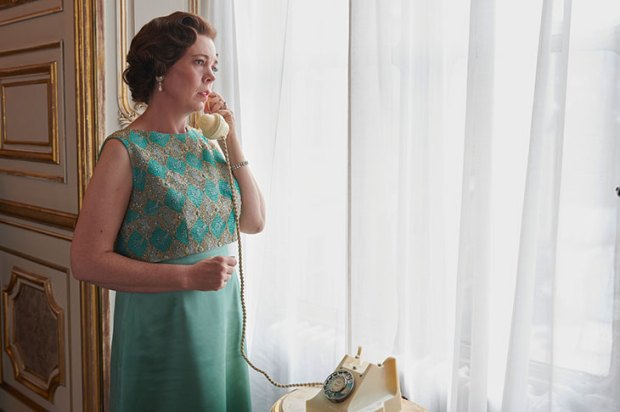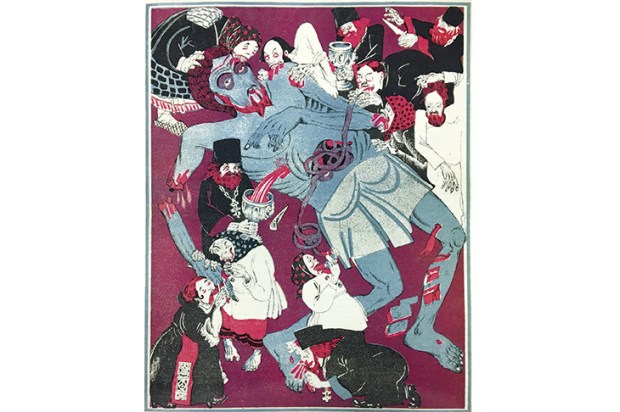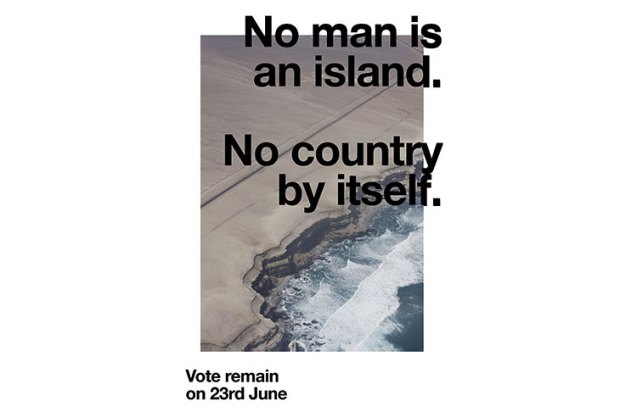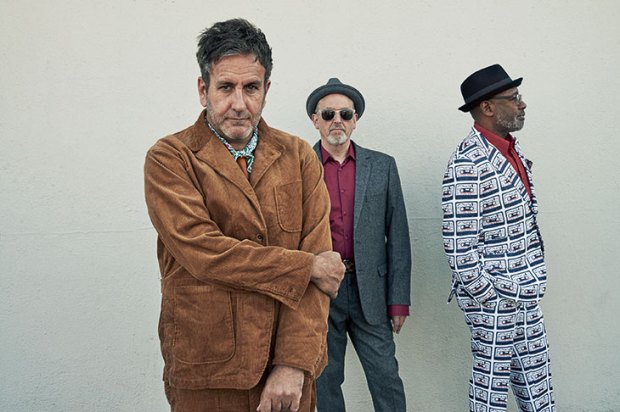This is not Midsomer Murders. The new film adaptation of Agatha Christie’s Murder on the Orient Express is thick with violence and sexual innuendo. It elevates Hercule Poirot, the diminutive, fastidious Belgian detective, with his egg-shaped head and pot belly, to part-time action figure, a man who chases bad guys down dizzying descents in exotic snowscapes before straightening his magnificent moustache with a twinkle in his eye. This is less cosy, golden age detective fiction than a cross between Daniel Craig’s 007 and Scandi noir.
Kenneth Branagh, who stars and directs, has brought his experience playing the dejected Swedish police inspector Wallander to the fore, giving the usually reserved detective unusual passion and vulnerability. His Poirot confides professional self-doubt to a photograph of a long-lost love and rages loudly at his suspects. It’s a far cry from the reserved elegance of the Sidney Lumet’s 1974 film.
This is not the first recent adaptation to take Christie to a darker place. Sarah Phelps, a screenwriter previously best known for her work on EastEnders, has become the doyenne of Christmas Christie, writing two controversially macabre BBC hits, And Then There Were None and Witness for the Prosecution. Phelps reinstated darker original endings that Christie herself had later taken out. They are desperate, sinister whodunnits, with complicated, morally ambiguous characters. This Christmas, a third Phelps/Christie collaboration arrives: Ordeal by Innocence and it promises more of the same.
Have we reached the end of the cosy crime era of cushy settings and quiet scrutiny? Christie became best known for her ‘cozies’ — the jewels, parties and exotic travel of the 1920s golden age; the quiet reserve of the English countryside village. Midsomer Murders, very much indebted to Christie, is one of Britain’s most successful TV exports. Christie has been both revered and condemned for her devious, Cluedo-style plot machinations, which some say come at the expense of realism or characterisation. Her hard-boiled American rival Raymond Chandler abhorred her work. ‘The English may not always be the best writers in the world, but they are incomparably the best dull writers,’ he sneered in his famous 1950 essay, ‘The Simple Art of Murder’.
Previous Christie adaptations have been happy to maintain this illusion of cosiness. The Mirror Crack’d, a deliciously 1980s adaptation set in St Mary Mead, home of Miss Marple, is basically a parade of celebrities (both real and fictional), from Elizabeth Taylor to Tony Curtis, in which we the viewers are as thrilled to see the ensemble as the villagers at the local fête. The dead body is peripheral. Similarly, the famous 1957 version of Witness for the Prosecution, directed by Billy Wilder and starring Marlene Dietrich, is a relatively benign courtroom drama, in which the victim and the accused are seen cheekily sipping sherry together.
In Phelps’s version, that same lady of the house emits carnal moans while her young lover (explicitly paid for) pleasures her as the jealous maid sneaks a peek. This is a world where ‘brains are splattered up the wall’, where ‘blood is still steaming’. In And Then There Were None, someone uses the F-word.
These riskier adaptations do not, however, feel at odds with what Christie originally wrote. Barry Forshaw, who has written numerous books on British and Nordic crime-writing, says that the macabre and psychological depth is evident in Christie’s work. It’s just hidden behind her economical use of language. ‘Crime fiction has gone the same way as superhero movies, James Bond. There is light and dark in the source material.’ Christie herself said, ‘Very few of us are what we seem.’ It is here that the darkness lies, in the potential for any character to be hiding something horrifying, yet utterly believable. Increasingly, in these newer adaptations, this is being more thoroughly explored.
The shift we have seen was not just necessary but inevitable, says Forshaw. ‘The overwhelming popularity of psychologically driven crime fiction, where we care as much about the detective’s back story as we do about the murder itself — from The Killing and The Bridge to The Girl with the Dragon Tattoo — has created a need for more darkness in Christie interpretations. And contrary to popular belief Christie cared very much about characterisation. Her plots are entirely based around motive, around what drives people, so they translate very well to the modern take on the genre.’
The renowned crime-fiction columnist of the New York Times Book Review, Marilyn Stasio, recently lamented the demise of the traditional whodunnit in favour of the howdunnit and whydunnit. ‘Nowadays there’s a lot more hanging on the character. I liked them better when… the emphasis was on the puzzle and how to solve it,’ she says on Criminal, an eclectic American podcast on crime.
However, what differentiates the new Christie adaptations from modern detective fiction is that they are still ingenious puzzles, albeit ones many of us have done before. Poirot still meticulously examines, interviews, ponders, working with ‘those little grey cells’ to see what might have driven someone to murder.
Indeed, it’s the ultimate rationality of the puzzle that is perhaps so appealing in our murky age of fake news and moral quandaries, argues Forshaw. ‘In the end, we always know what has happened, which is very satisfying. Then, of course it’s essentially back to business as usual — the perfect format for a franchise in fact.’
And if Poirot becomes less a figure of fun (moustache aside) and more a sleuth whose loneliness we pity, then surely Raymond Chandler would approve.
Got something to add? Join the discussion and comment below.
Get 10 issues for just $10
Subscribe to The Spectator Australia today for the next 10 magazine issues, plus full online access, for just $10.
You might disagree with half of it, but you’ll enjoy reading all of it. Try your first month for free, then just $2 a week for the remainder of your first year.














Comments
Don't miss out
Join the conversation with other Spectator Australia readers. Subscribe to leave a comment.
SUBSCRIBEAlready a subscriber? Log in